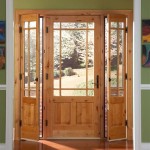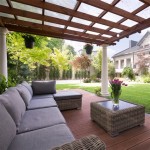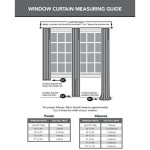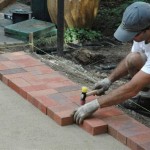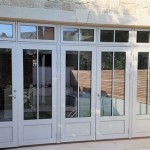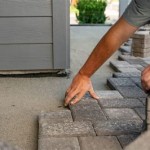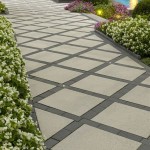Creating a Cat Patio Enclosure in the Netherlands
The Netherlands, with its picturesque canals and charming gardens, presents a unique opportunity for cat owners to create beautiful and functional patio enclosures. These enclosures allow cats to enjoy the outdoors safely, preventing them from escaping and encountering dangers like traffic, predators, or other animals. This article explores the essential considerations and steps involved in building a cat patio enclosure in the Netherlands.
1. Planning and Design:
The first step in creating a cat patio enclosure is careful planning. Consider the following factors:
- Size and Shape: The enclosure's size should be large enough to provide ample space for your cat to roam, play, and climb. The shape can be rectangular, square, or even custom-designed to fit your patio's layout.
- Materials: Common materials for cat enclosures include wire mesh, wood, or a combination of both. Consider factors like durability, weather resistance, and visibility when choosing materials. Wire mesh is often preferred for its transparency, allowing cats to see their surroundings clearly.
- Location: Choose a location that offers adequate sunlight, shade, and access to fresh air. The enclosure should be positioned away from noisy or busy areas and provide a safe and stimulating environment for your cat.
- Entry and Exit: Designate a secure entry and exit point for your cat, ensuring it can easily access the enclosure and return indoors as needed. Consider using a cat flap or a door with a secure latch.
- Safety Features: Incorporate safety features like a secure roof, a sturdy base, and a strong locking mechanism to prevent escapes. Ensure the mesh is fine enough to prevent your cat from getting its head stuck or escaping.
- Permits and Regulations: Check with local authorities and homeowner associations for any specific regulations or permits required for constructing outdoor structures on your property.
2. Construction:
Once the design is finalized, you can begin constructing the enclosure. This involves the following steps:
- Foundation: Create a sturdy foundation using concrete, wood, or a combination of both. The foundation should be level and stable to support the weight of the enclosure and prevent it from shifting or becoming unstable.
- Frame: Construct a frame using wood, metal, or a combination of both. The frame should be strong enough to support the weight of the enclosure, and the dimensions should match the desired size and shape.
- Enclosure Walls: Attach the wire mesh or other chosen material to the frame using strong, secure fasteners. Ensure that the mesh is properly tensioned and secured to prevent sagging or tearing.
- Roof: Construct a roof using wood, metal, or other suitable materials. The roof should provide adequate shade and protection from rain and other weather elements. Ensure the roof is securely fastened to the frame and the enclosure's edges.
- Doors and Entry Points: Install a secure cat flap or door for easy access and exit. Ensure the door is strong enough to withstand your cat's attempts to escape and has a secure locking mechanism.
- Finishing Touches: Once the enclosure is built, you can add finishing touches like climbing structures, scratching posts, and toys to create a stimulating and engaging environment for your cat. Consider adding a layer of gravel or artificial turf for drainage and aesthetic purposes.
3. Enrichment and Safety:
Once the enclosure is complete, focus on creating a safe and enriching environment for your cat. Consider the following:
- Plants and Vegetation: Consider adding pet-safe plants and vegetation to provide shade, visual stimulation, and natural enrichment. Research which plants are non-toxic to cats before introducing them into the enclosure.
- Toys and Activities: Provide a variety of toys, scratching posts, and climbing structures to keep your cat entertained and engaged. Consider adding interactive feeders, puzzles, or other toys that promote mental stimulation.
- Water Source: Ensure a constant supply of fresh water for your cat. You can use a water bowl, a drinking fountain, or a drip system to provide automatic water access.
- Weather Protection: Provide shelter from extreme weather conditions. A roof over the enclosure provides protection from rain, snow, and direct sunlight. You may also want to consider adding a windbreak or a small shelter within the enclosure.
- Routine Maintenance: Regularly clean and maintain the enclosure to ensure it remains hygienic and safe for your cat. This includes removing waste, replenishing water, and inspecting the mesh and other components for damage or wear.
Building a cat patio enclosure in the Netherlands can provide a safe and enriching outdoor space for your feline companion. By carefully planning, constructing, and maintaining the enclosure, you can create a haven where your cat can enjoy the fresh air and natural beauty of their surroundings while remaining secure and protected.

Premium Outdoor Catios Catio Kits Custom Designed

Premium Outdoor Catios Catio Kits Custom Designed

Premium Outdoor Catios Catio Kits Custom Designed

Premium Outdoor Catios Catio Kits Custom Designed

Outdoor Pvc Catio For Cat Play Protection

Premium Outdoor Catios Catio Kits Custom Designed

Catios Cat Patios Steel Framed Protectapet

How To Build A Catio Buy Or Make An Outdoor Cat Enclosure

Choosing The Best Catio Outdoor Cat Enclosure Habitat Haven

Catios Cat Pens Cages And Runs Protectapet
Related Posts

